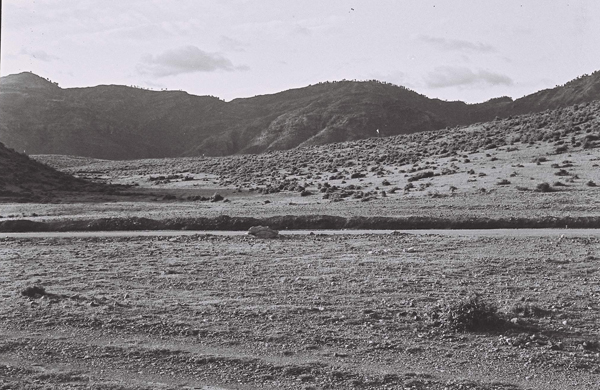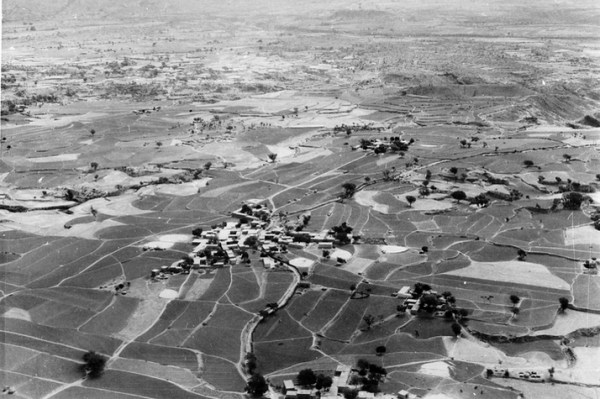A decade after the fissures created by the Partition and in the backdrop of the ongoing search for an independent political identity, Pakistan’s first military dictator General Ayub Khan toppled the Iskander Mirza government and declared martial law in 1958.
When Pakistan gained independence in 1947, Karachi, a port city at the confluence of business activity and intellectual tradition, became the de facto capital of the Islamic nation.

However, General Khan’s takeover also envisioned a modern federal capital – one that was away from the interference of business interests and closer to the seat of the army.
Need for a modern capital
The reasons for relocating the capital were manifold for the country’s first military government.
Karachi, a bustling port city, was vulnerable to attacks from the sea, and amidst the turmoil that surrounded the Indian subcontinent, the possibility of war loomed large. The former capital was also far away from the General Headquarters, where the Pakistan Army sat.
The raising of the new capital would also be seen as a push towards decentralising development at a time when Pakistan’s autonomous polity was in its infancy.
By 1958, the military administration approved a new site near the garrison of Rawalpindi, in the northwest of the country, on Potwar Plateau. Unlike Karachi, the new capital site sat squarely between mountainous terrain, inaccessible to rogue travellers.
Story continues below this ad
 Terrain of the site before developmental work. (Capital Development Authority)
Terrain of the site before developmental work. (Capital Development Authority)
The site was also easily accessible from the remotest corner of the country.
Naming the ‘city of Islam’
After the plan to build a new city was set in motion, a weekly paper, the Qandeel Lahore, sought suggestions from the public to propose a new name for the site.
A batch of suggestions came in, and in February 1960, the name ‘Islamabad’, literally meaning the ‘city of Islam’, coined by Qazi Abdur Rehman, was finalised by the federal cabinet for the site.
The cabinet reportedly responded to Qazi’s letter, which was addressed to the President, in April 1960 and informed him saying that his name was registered for a plot of land in Islamabad.
Story continues below this ad
According to a report by Dawn, Rehman hailed from Amritsar and worked as a teacher, poet and author.
Fulfilling a promise made 63 years ago, the capital development body, presently headed by Noorul Amin Mengal, has now decided to allot a plot in the capital to the family of the late Qazi Abdur Rehman, the report by Dawn indicated.
Constitution of the Capital Development Authority
The city that General Khan’s government envisaged still had no physical trace by the end of 1959, and a three-member commission was constituted to set up the metropolis.
An ordinance dated June 27, 1960, notified the establishment of the Capital Development Authority (CDA), whose function was to “prepare a master plan and a phased master programme for the development of the Capital Site, and prepare a similar plan and programme for the rest of the Specified Areas”.
Story continues below this ad
The ordinance added that “all such plans and programmes shall be submitted to the {Federal Government) for approval”.
 Officials briefing General Ayub at the designated site. (Capital Development Authority)
Officials briefing General Ayub at the designated site. (Capital Development Authority)
During the early stages of the formation and development of the CDA, a chairman, a financial advisor and a board member were handed the realm. The commissioner of Rawalpindi was assigned an ex-officio membership, for collaborative purposes.
Islamabad’s construction commenced based on a master plan drawn up by a Greek firm of architects, Doxiadis Associates, which chalked a triangular-shaped grid system with its apex towards the Margalla Hills.
The city was divided into eight zones: the diplomatic enclave, the commercial district, the educational sector, the industrial area and so on, each with its own shopping main area and park.
Story continues below this ad
 Bird’s eye view of Islamabad. (Capital Development Authority)
Bird’s eye view of Islamabad. (Capital Development Authority)
A decade after its conception, the Islamic nation erected a centrally located capital city in 1967. Today, it stands as one of the safest, costliest, most urbanised and most metropolitan cities in the country.



 Terrain of the site before developmental work. (Capital Development Authority)
Terrain of the site before developmental work. (Capital Development Authority) Officials briefing General Ayub at the designated site. (Capital Development Authority)
Officials briefing General Ayub at the designated site. (Capital Development Authority) Bird’s eye view of Islamabad. (Capital Development Authority)
Bird’s eye view of Islamabad. (Capital Development Authority)





























